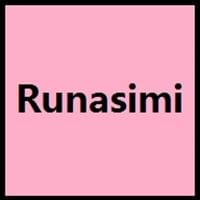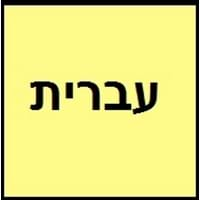Quechua vs Hebrew
Countries
Argentina, Bolivia, Chile, Colombia, Ecuador, Peru
Israel
National Language
Bolivia, Ecuador, Peru
Israel
Second Language
Not spoken in any of the countries
Israel
Speaking Continents
South America
Africa, Asia, Europe
Minority Language
Not spoken in any of the countries
Poland
Regulated By
Not Available
Academy of the Hebrew Language
Interesting Facts
- One of the most widely spoken indigenous language in the America is Quechua.
- Quechua language has borrowed many words from Spanish.
- The original language of Bible is Hebrew.
- The men and women use different verbs in hebrew language.
Similar To
Not Available
Arabic and Aramaic languages
Derived From
Not Available
Aramaic Language
Alphabets in
Quechua-Alphabets.jpg#200
Hebrew-Alphabets.jpg#200
Writing Direction
Not Available
Right-To-Left, Horizontal
Language Levels
Not Available
Hello
Rimaykullayki
שלום (Shalom)
Thank You
Solpayki
תודה (Toda)
How Are You?
Allillanchu
מה שלומך? (ma shlomxa)
Good Night
Allin tuta
לילה טוב (Laila tov)
Good Evening
Wuynas nuchis
ערב טוב (Erev tov)
Good Afternoon
Wuynas tardis
אחר צהריים טובים (Achar tzahara'im tovim)
Good Morning
Wuynus diyas
בוקר טוב (Boker tov)
Please
Not Available
בבקשה (bevekshah)
Sorry
Pampachaykuway
סליחה! (Slicha)
Bye
bye
להתראות (Lehitraot)
I Love You
Kuyayki
אני אוהבת אותך (Ani ohevet otcha)
Excuse Me
Pampachaway
בבקשה!
Dialect 1
Ancash
Ashkenazi Hebrew
Where They Speak
Peru
Israel
How Many People Speak
Not Available
Dialect 2
Huánuco
Samaritan Hebrew
Where They Speak
Peru
Israel, Palestine
How Many People Speak
Not Available
Dialect 3
Yaru
Yemenite Hebrew
Where They Speak
Peru
Israel
How Many People Speak
Not Available
Speaking Population
Not Available
Second Language Speakers
Not Available
Native Name
Qhichwa
עברית / עִבְרִית (ivrit)
Alternative Names
North La Paz Quechua
Israeli, Ivrit
French Name
quechua
hébreu
German Name
Quechua-Sprache
Hebräisch
Pronunciation
Not Available
[(ʔ)ivˈʁit] - [(ʔ)ivˈɾit]
Ethnicity
Quechua
Not Available
Origin
16th Century
1000 BC
Language Family
Quechumaran Family
Afro-Asiatic Family
Subgroup
Andean Equatorial
Semitic
Branch
Not Available
Canaanitic
Early Forms
No early forms
Biblical Hebrew, Mishnaic Hebrew, Medieval Hebrew, Hebrew
Standard Forms
Quechua
Modern Hebrew
Language Position
Not Available
Signed Forms
Not Available
Signed Hebrew
Scope
Macrolanguage
Individual
ISO 639 6
Not Available
Not Available
Glottocode
quec1387
hebr1246
Linguasphere
No data Available
12-AAB-a
Language Type
Living
Living
Language Linguistic Typology
Not Available
Subject-Verb-Object, Verb-Subject-Object
Language Morphological Typology
Agglutinative, Synthetic
Fusional, Synthetic
Quechua and Hebrew Language History
Comparison of Quechua vs Hebrew language history gives us differences between origin of Quechua and Hebrew language. History of Quechua language states that this language originated in 16th Century whereas history of Hebrew language states that this language originated in 1000 BC. Family of the language also forms a part of history of that language. More on language families of these languages can be found out on Quechua and Hebrew Language History.
Quechua and Hebrew Greetings
People around the world use different languages to interact with each other. Even if we cannot communicate fluently in any language, it will always be beneficial to know about some of the common greetings or phrases from that language. This is where Quechua and Hebrew greetings helps you to understand basic phrases in Quechua and Hebrew language. Quechua word for "Hello" is Rimaykullayki or Hebrew word for "Thank You" is תודה (Toda). Find more of such common Quechua Greetings and Hebrew Greetings. These greetings will help you to be more confident when conversing with natives that speak these languages.
Quechua vs Hebrew Difficulty
The Quechua vs Hebrew difficulty level basically depends on the number of Quechua Alphabets and Hebrew Alphabets. Also the number of vowels and consonants in the language plays an important role in deciding the difficulty level of that language. The important points to be considered when we compare Quechua and Hebrew are the origin, speaking countries, language family, different greetings, speaking population of these languages. Want to know in Quechua and Hebrew, which language is harder to learn? Time required to learn Quechua is 44 weeks while to learn Hebrew time required is 44 weeks.





